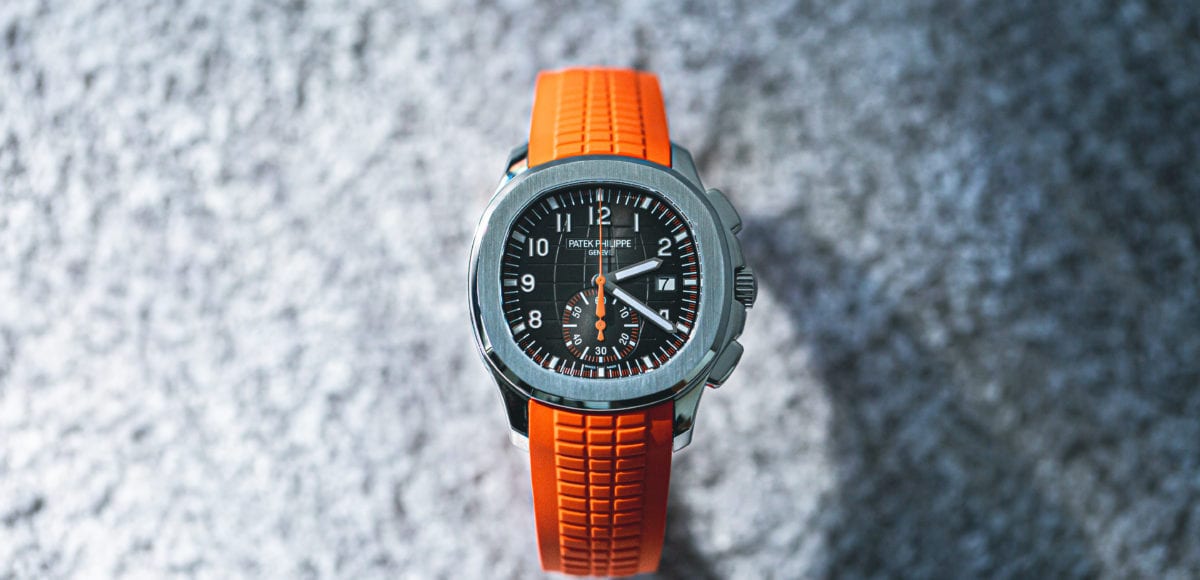Origins of the Aquanaut
The 1970s marked a moment of significant shifts in the watch industry. During the decade prior, the mechanical watch market had surged with advancements in accuracy, efficiency, and water resistance. However, when it came to variety of watches in the 1960s, there were primarily two distinct categories: dress watches and tool watches. The 70s brought about the first quartz watches, challenging the mechanical watch industry as the world knew it.
In response, mechanical watch brands knew they needed to step up their game, and many decided to diversify. From this spurred an entirely new category of watch: the luxury sport watch. The Audemars Piguet Royal Oak was the first model to establish this new category in 1972. Shortly after came the next famous luxury sport watch: the Patek Philippe Nautilus. Both models were the creative genius of the legendary Gerald Genta. Since then, these two brands have become synonymous with these designs and the luxury sport watch at large. Decades later, they each decided to up the ante. Audemars Piguet released the Royal Oak Offshore in 1993, and Patek Philippe debuted the Aquanaut in 1997. Here, we’ll take a deeper look at Patek Philippe’s follow up to their iconic Nautilus: the Aquanaut.
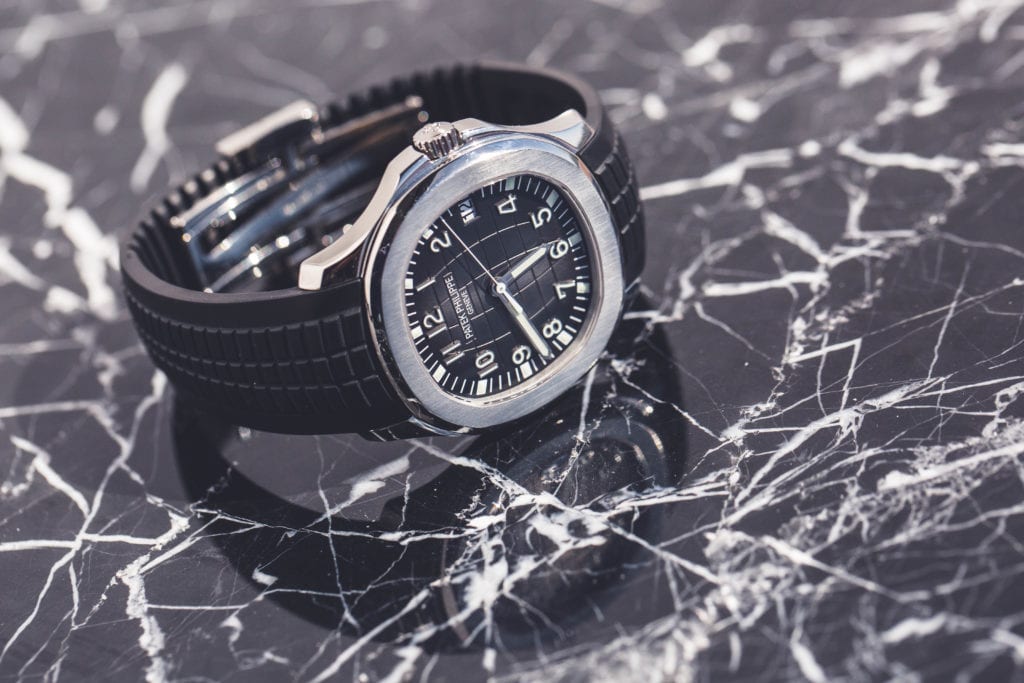
Context and Conceptualization
The Aquanaut represents a more modern take on the Nautilus, aiming to appeal to the up-and-coming group of buyers. Think back to the world in 1997. This was the era of the dot-com boom, with the younger generation embracing the possibilities of the Internet. Millionaires were made overnight, but this wasn’t the age of suit and tie millionaires. The tech scene had a more casual approach to luxury. Enter a watch like the Patek Philippe Aquanaut.
Initial Design
In many ways, the Aquanaut was the second incarnation of the Nautilus. The Nautilus was cutting edge when it first launched. Yet, it had become a staple in the collections of seasoned enthusiasts by the 1990s. Patek Philippe needed something fresh, so they built on its design to create something new. The original Aquanaut, Reference 5060 was slightly smaller than the Nautilus – 35.6mm compared to 37.5mm. The Aquanaut also introduced a new dial motif showcasing a raised guilloche design that gave the watch depth. Still, the strap is quite possibly the most unique and remarkable feature of the Aquanaut. Patek Philippe wanted the strap to add to the sportiness of the watch but wanted something more unique than rubber.
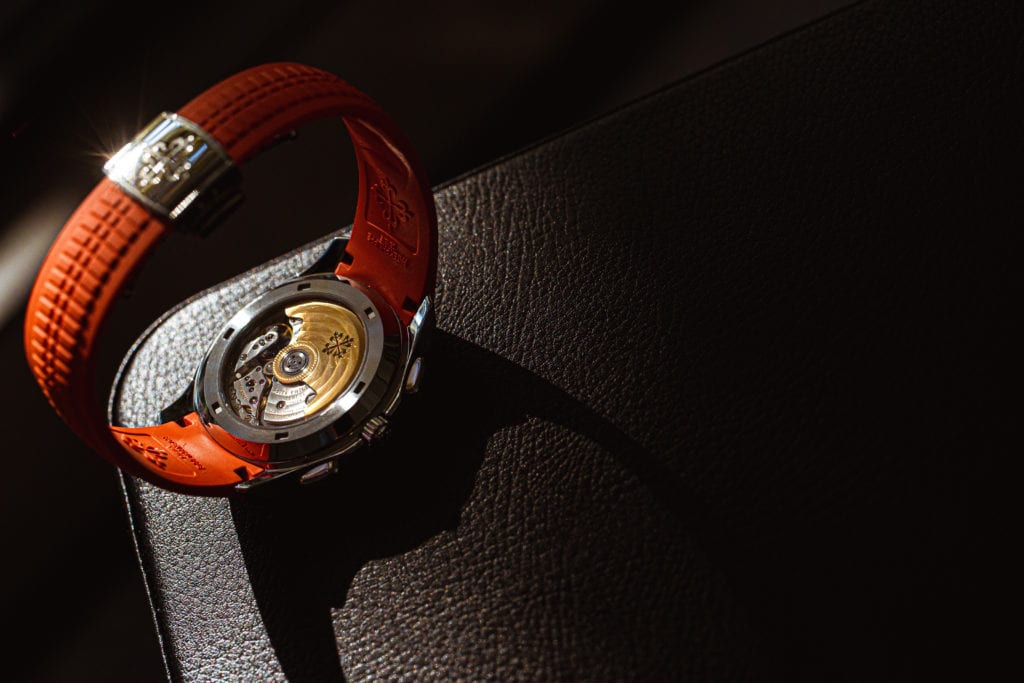
Instead, they spent over a year developing their own polymer comprised of over twenty different materials. The aesthetic drew inspiration from the tropic straps that were popular for 1960s dive watches. In addition, it repeated the guilloche design of the dial, once more adding a distinctive texture and depth. The strap was just as robust as it was handsome, offering resistance to saltwater, UV rays, and bacteria.
The Generation that Solidified the Aquanaut’s Place in History
The initial Reference 5060 was successful in its own right. However, it wasn’t until the second generation that the model truly took form and solidified a place for the collection. Released just a year later in 1998, the Reference 5065 more closely embodied the modern Aquanaut we know and love. One of the most notable differences was a significantly larger case, measuring 38mm. It also featured a sapphire caseback as opposed to a solid one. Here, it showcased the all new Caliber 315 SC in place of the original Caliber 330 SC.
Celebrating Ten Years of the Aquanaut
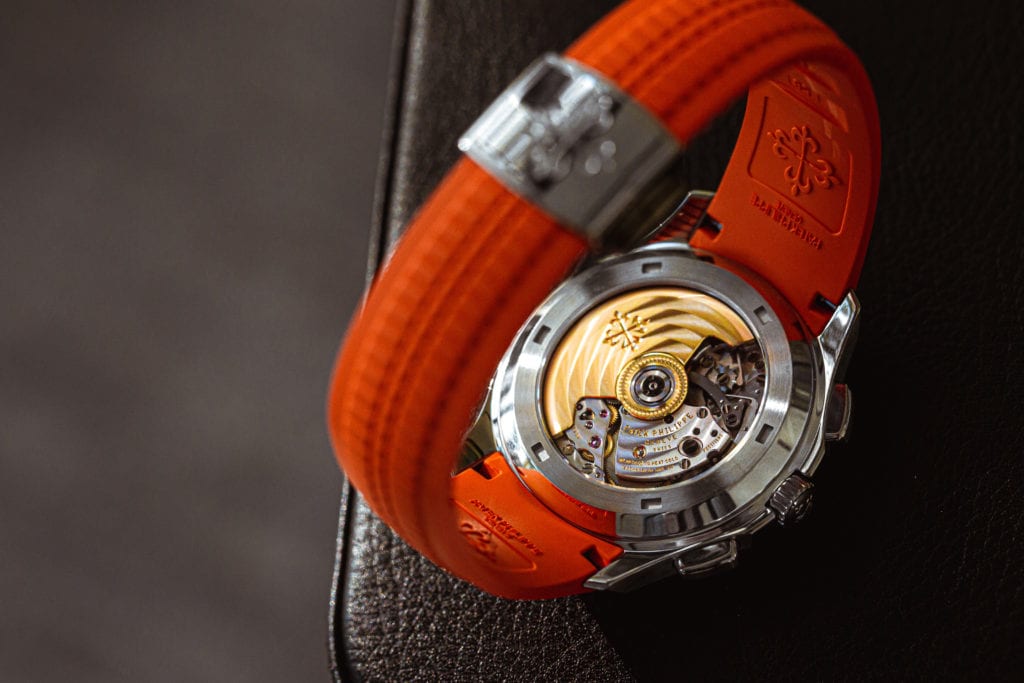
In its first ten years of existence, Patek Philippe continued to refine the Aquanaut with a number of different references. One of the most significant came in celebration of the model’s tenth anniversary. With the commemorative model, Patek Philippe made a noticeable update to the dial. First, they made a subtle change to the layout of the hour markers, lume plots, and date window. Earlier variations featured an hour marker at the three-o’clock position and a date window to the left. The anniversary model eliminated the number three and replaced it with a lume plot. This created a more refined look with more consistency in the flow of the chapter ring.
Still, the most notable change was in the design of the iconic dial itself. It maintained a similar pattern as the earlier models. However, it lost some of its depth and texture and gained more curves. The result was once gain more polished and upped the ante on the luxury aspect of the model. In conjunction, they redesigned the strap to match by carrying the curvature of the pattern more fluidly from the case. This modification also more closely emulated the feel of the integrated bracelet from the Nautilus. In addition, the brand created an all-new clasp exclusively for the line.
Evolution in the New Millennium
In the years to follow, Patek Philippe further enhanced the Aquanaut collection. In 2011, they added the first model with a complication into the line: the Reference 5164 Travel Time. This function later inspired the twentieth anniversary model in 2017. That year, Patek Philippe commemorated this milestone with the Advanced Research Aquanaut Travel Time, Reference 5650G. With this model, the brand once again partnered with the illustrious department of Advance Research to introduce two new innovations into the collection. These include a new Spiromax® balance spring with a patented terminal curve and inner boss as well as time zone corrections with compliant (flexible) mechanism in steel.
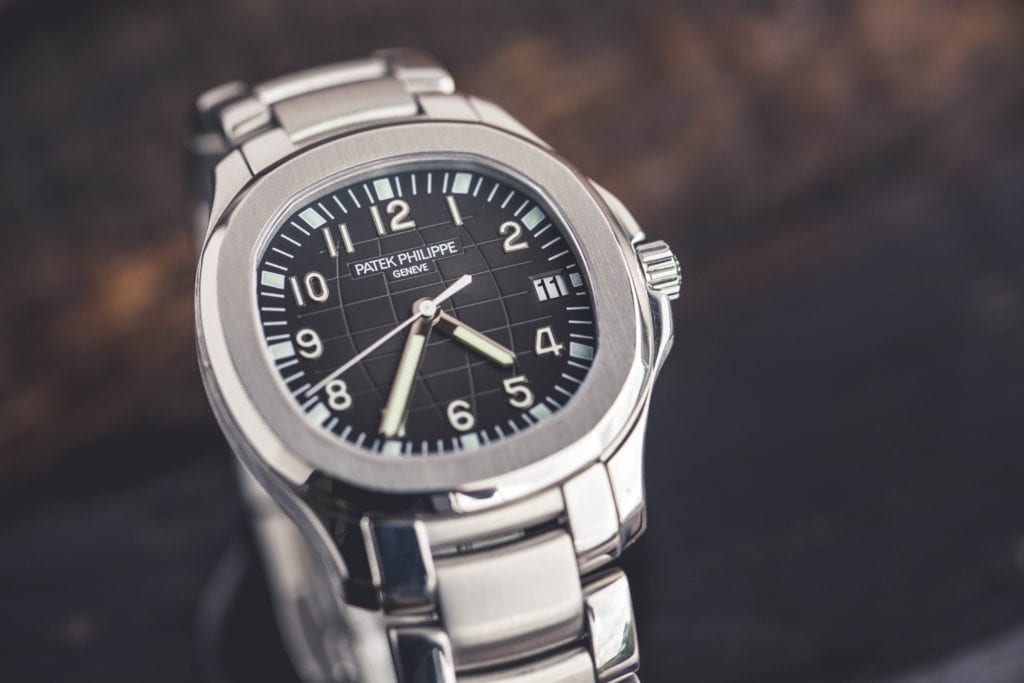
Amazingly, this wasn’t the only new Aquanaut model released in conjunction with the twentieth anniversary. Patek Philippe also debuted the Aquanaut Jumbo, Reference 5168G. As the name suggests, the model got an upgrade to a 42.2mm case. In addition, it became the first Aquanaut model in white gold. In 2018, the brand followed up these commemorative models by introducing another complication into the line, this time a chronograph.
Get More Articles Like This in Your Inbox
We're constantly creating great content like this. So, why not get it delivered directly to your inbox? By subscribing you agree to our Privacy Policy but you can unsubscribe at any time.





